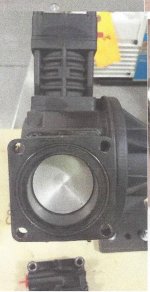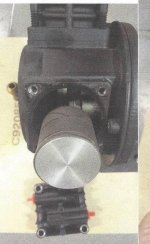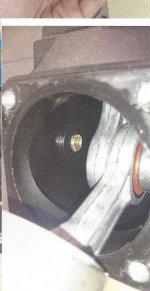Am in the process of testing the bigger version of this with the dual chamber. Have run first part of the testing with 120 voltage setup, but plan to run it through its paces wired up at 220 to see what the differences are. Even though it says it will push 60 psi, I found that it was closer to low to mid 50's, & like the Gast's it doesn't like starting up with much pressure - needs a regulator set for around 30 to keep it happy.
It was run from 12 x 12 collection chamber @ average pressures of 30 psi in the chamber with water bath @ 70 degrees and running through a 3" x 48" tube of 3a before entering the pump, then into a MT69 that was in the same water bath before going into the freezer into a 65/35 propylene glycol water mix bath @ -30 degrees and then into a ambient temp tank. (the same setup I used to get # from my TR21 which is 13 lbs per hour). The output was 17 lbs per hour, but like I mentioned, it is picky about pressures!
Will get more info in the next week or so, adding the Appion #s as well as DB levels for the 3 pumps with the same setup.
BTW how are the Gast's doing, & does anyone know anything about the new Gast 86/87 series?
Only know of one person still running the Gast, and he has just broken the second one, and is hooking up the third. It is cantankerous to run, and Gast repelled in horror when they learned of the use we were putting it to, so good to see someone else step in with a diaphragm pump rated for our purpose.
The question with the Gast, was what happens when the diaphragms fail, which they can and do. Has any one answered that question on the BHOgart??
I stopped working the issue when Gast made it clear they weren't interested, but prior to that point had been researching stainless demand regulators that didn't use silicone rubber diaphragms.
Swagelok proposed one for $1500 but were reluctant to 100% guarantee it was suitable and take it back if it weren't.
With a demand regulator, such as is used for scuba and for propane carburetors on engines, a diaphragm pump wouldn't see inlet pressure at all, so ostensibly wouldn't stumble.
We also pumped into an auxiliary tank, and recovered from that to the higher pressure tank, so that pulling a vacuum on one side and building pressure on the other was less of an issue. That greatly reduced recovery time, while keeping our oil less recovery pump seals running wet.







